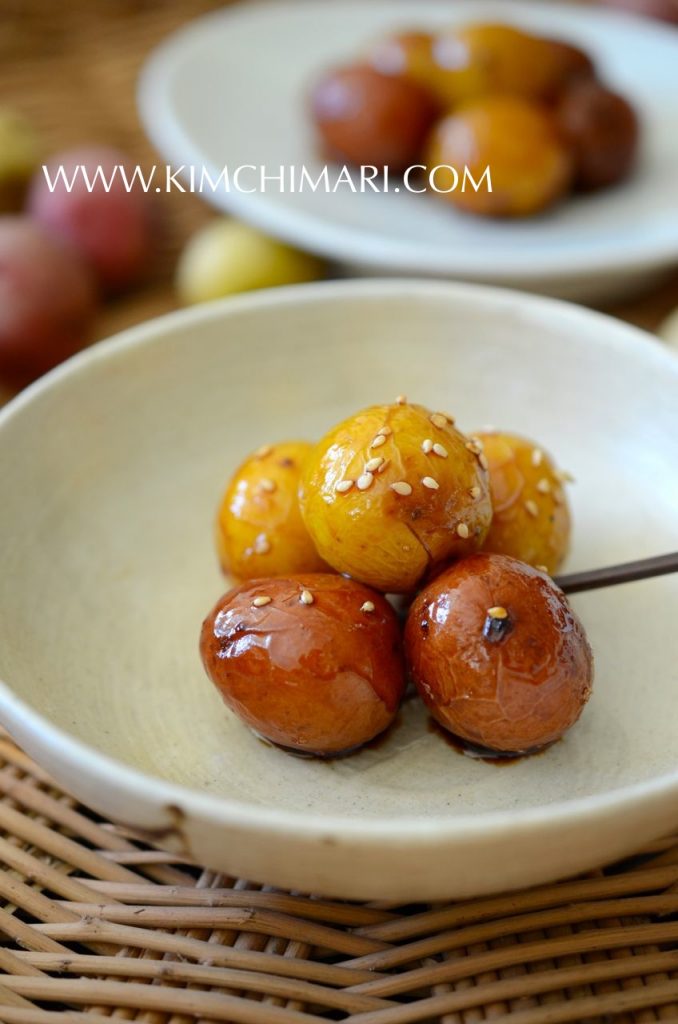
Korean potato side dish…this is probably what most people will call it, I thought. Not many will remember Gamja Jorim but that’s how it is called in Korean. Gamja means potatoes and this is a great simple Korean potato side dish that anyone, even YOU can cook at home. Gamja Jorim goes great with any Korean meal and is great for lunch boxes because it doesn’t have to be served warm. This ‘Korean potato side dish’ (unless you are referring to the string potato Korean side dish – which you can find recipe here) is often served at many Korean restaurants as a banchan that comes with your meal.
Story about Me and Potatoes – we go way back..
Now, I have thought long and hard and sadly (or may not to some?? haha) I have no story to share about Gamja Jorim. But I do have a story that comes to mind when I think about Potato Gratin. When attending middle school at the American Embassy School in New Delhi, India, I was taking French for my language class. And my wonderful French teacher decided to create a cultural experience for us and decided to have a fabulous French dinner party. It sounded just exquisite!!
So, each of us was assigned to cook a dish at home and bring to the party. I signed up to make Potato Gratin or Gratin Dauphinois. Sounds easy enough! Right?? Well…In those days in India, fresh milk was almost impossible to get regularly.. so my only option was to use powdered milk. Yes.. powdered milk.. It looked totally fine and beautiful when I put my assembled gratin in the oven.
But…when I took it out, something was not right..Why was their extra clear liquid floating around?? Where did the milk go?? And then there was some white curdled stuff in between the potatoes…sad sad sad..I was just sooo devastated. But it was time to go to the party. So I brought it to the party (I think we were being graded for attendance and participation) and I was just mortified when it was time to serve my dish. I will never forget that moment…trying to explain why the gratin came out that way in my very limited French. Thankfully everyone was totally understanding so it was all good.
BTW, I wanted to mention that I was asked by one of my readers recently for the recipe for this Korean potato side dish – so here you go!! This particular gamja jorim recipe is actually called Al Gamja Jorim 알감자조림 where “al” means “round ball or marbles”. I really love this version because keeping the skin on means much less work and then it also adds a great chewy texture. I recently found these beautiful “sunrise medley” organic baby potatoes from a California farm called Tasteful Selections.
Thanks to my sister #1 for the idea and so now let’s get cooking on this Korean potato side dish with baby potatoes glazed in soy sauce reduction.
What is the best Potato to use for Korean Potato Side Dish (Gamja Jorim)?
The most common way to make this Korean potato side dish is by cutting a large potato into cubes and boiling in soy sauce and reducing it. The problem with this is that sometimes, if you overcook the potato and/or if you are using a creamy, starchy or floury potato like the common Russett or Yukon gold, it will start to become mashed potato jorim and that’s not really good.
- Best type of potato to use for Gamja Jorim are waxy potatoes like yellow potato, red bliss or round white/red. These waxy potatoes are the ones well-suited for potato gratins, soups, stews and salads.
If you are going to make a cubed style Korean potato side dish (gamja jorim), the I know different types of potatoes are available in different parts of the world, so I found this guide from this article very useful – “mix one part salt to 11 parts water in a measuring jug and add the potato. A floury/starchy one will almost always sink to the bottom of the jug, while a waxy one will float“.
Chef’s Tips for Perfect Korean Potato Side Dish (Gamja Jorim)
- Avoid using starchy potato like the common Russett or Yukon gold, it will start to become mashed potato jorim and that’s not really good.
- Best type of potato to use is waxy potatoes like yellow potato, red bliss or round white/red.
- Peeled and cut potatoes vs Unpeeled baby potatoes – using unpeeled baby potatoes gives you more texture while the peeled one gives you a softer, smoother texture. Just depends on what you like!
- Add onions or nuts to make it extra flavorful but personally I’m not a big fan of adding unnecessary things but it won’t hurt. 😉
- Will keep fine for 2 days at room temperature because the dish is quite well seasoned.
- Store in the fridge for longer periods but will not be as yummy as when it is served at room temp or warm.
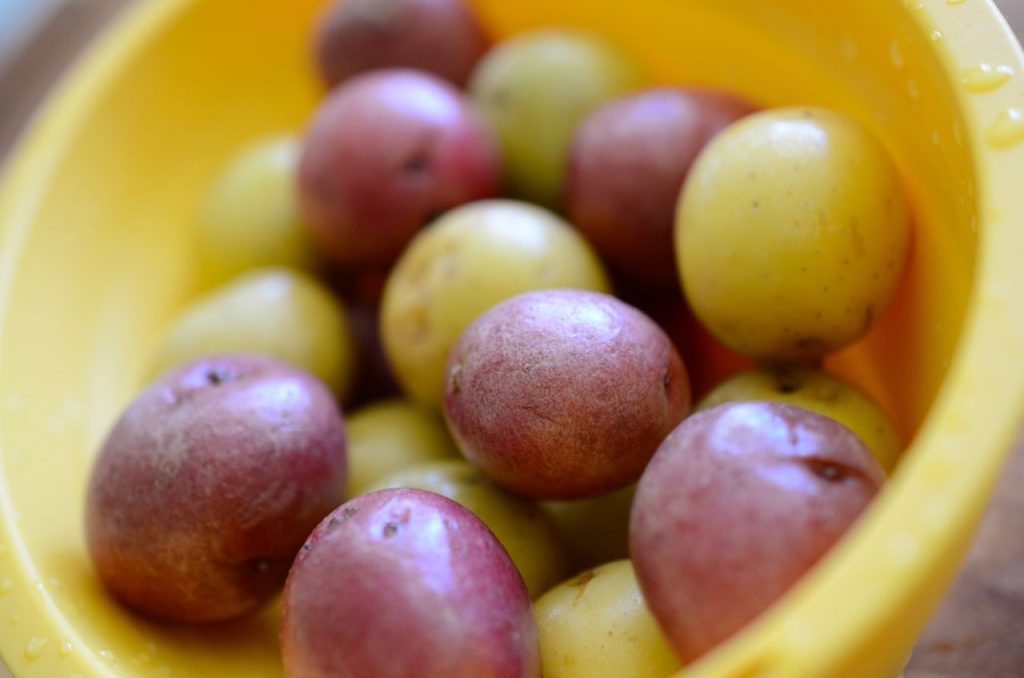
Step-by-Step Directions
Servings: 3-4 Cooking Time: 40 min Difficulty: Easy
- Rinse baby potatoes. If using large thick skinned potato, skin and cut into cubes.
- Cook potatoes in a pot with enough water to fully cover potatoes. For me, it was about 1 1/2 C water for an 8 in(20cm) pot.
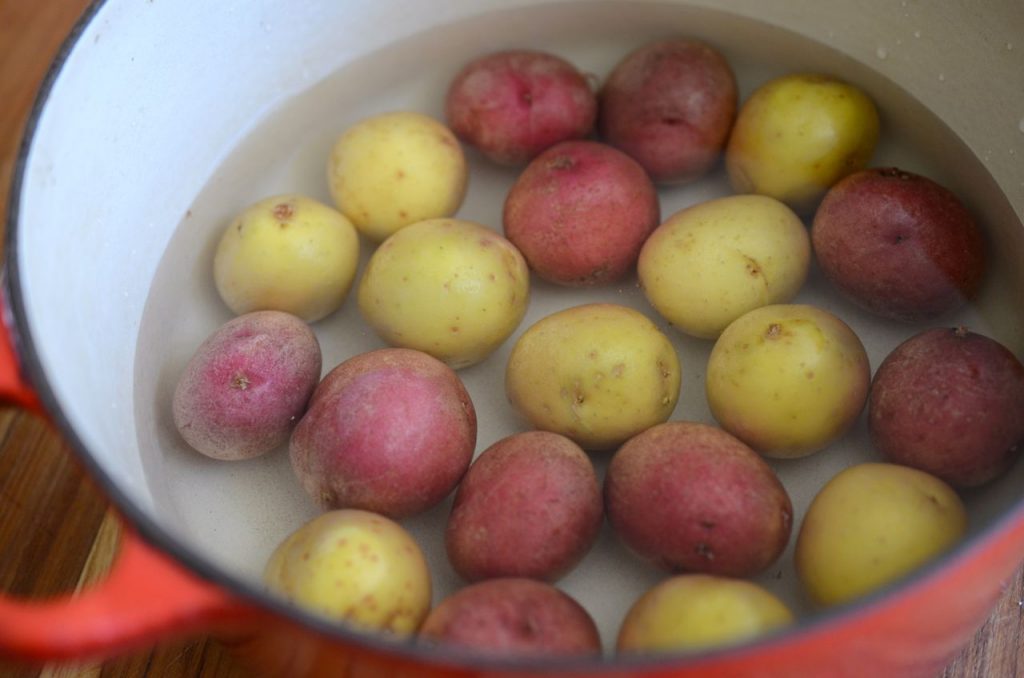
baby potatoes in pot with water - Once it boils, lower heat to medium and cook for about 10 min. Drain.
- Add potatoes back to pot, add 2 C water, 3 T soy sauce, sugar, vegetable oil and optionally add dried shitake mushrooms for added flavor.
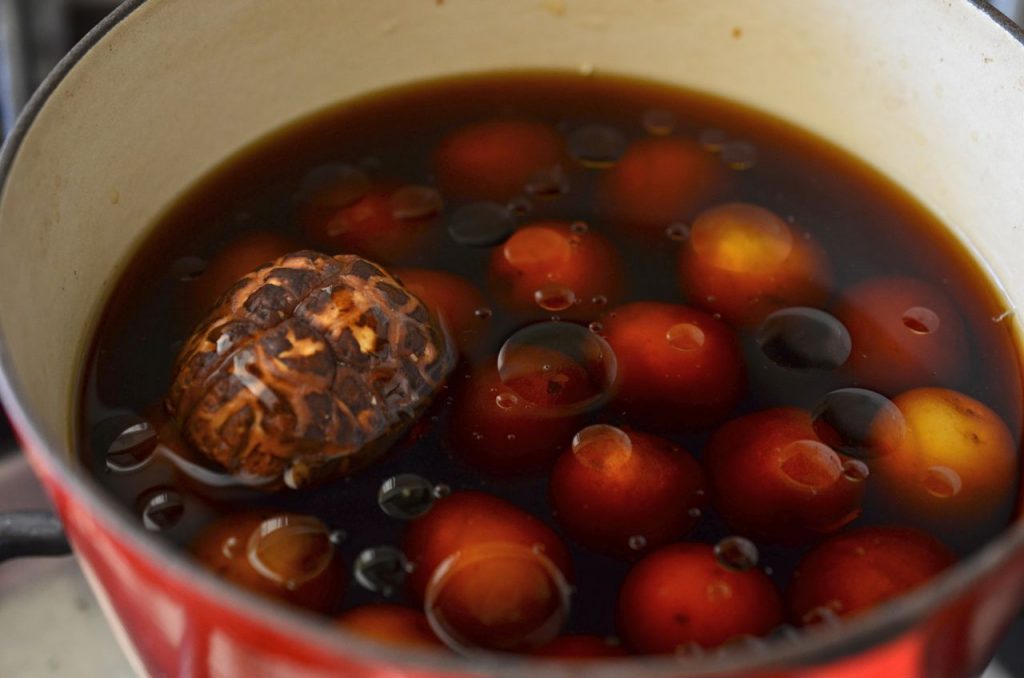
korean potato side dish (gamja jorim) cooking in pot - Bring to boil and then simmer, covered for 30 min or so until the liquid has reduced to about 1/3.
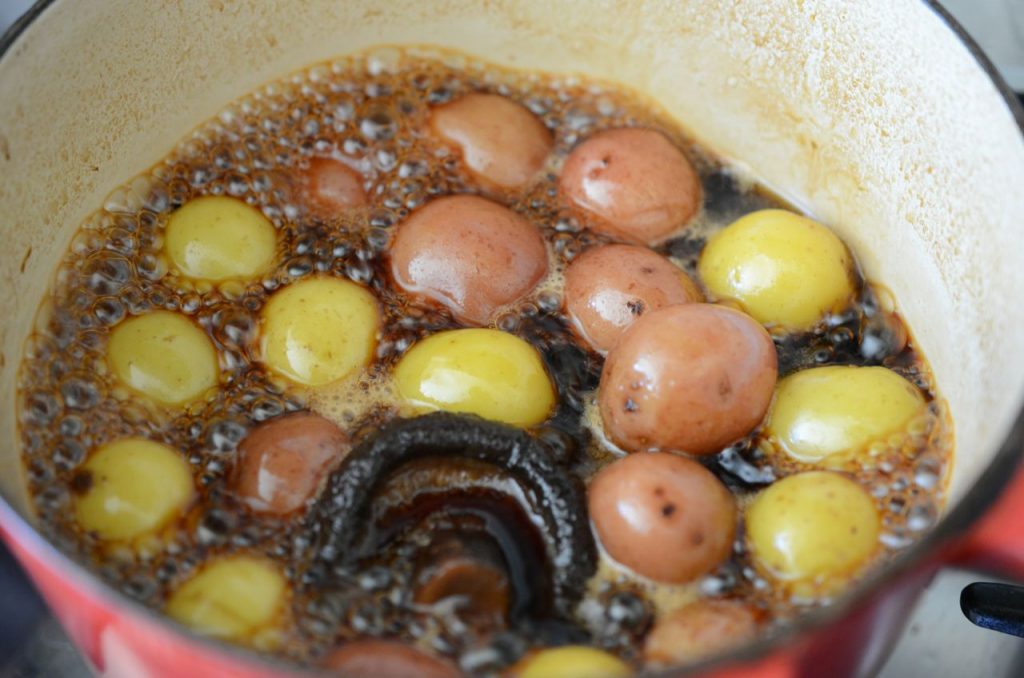
Korean Potato Side Dish (Gamja Jorim) with liquid reducing - Uncover and add 2 T maple syrup. Further reduce (uncovered) until there is almost no liquid. Taste the potato. The saltiness may be perfect for you at this point. But to make it extra delicious with rice, you may want to add 1 tsp more of soy sauce.
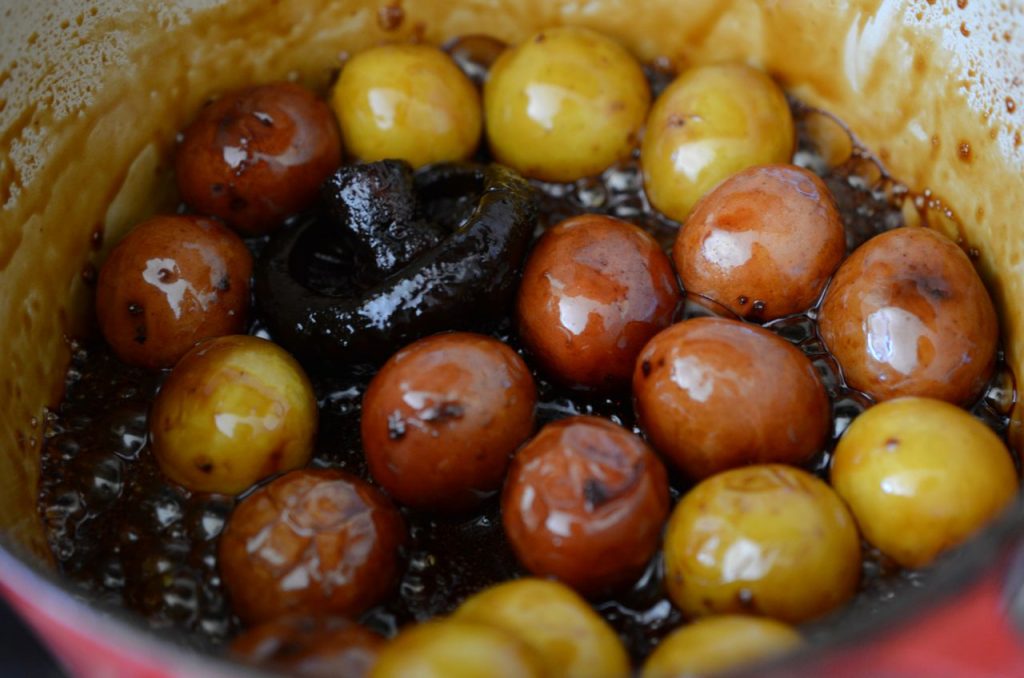
Korean potato side dish or gamja jorim almost done cooking - Now, this final step is really important. You may want to stop at step 6 but then sauce will not fully coat the potatoes. Reduce from 6 just few more minutes while you stir the potatoes to make sure they are evenly coated. And you will have potatoes that look amazing like these – yum yum yum!!
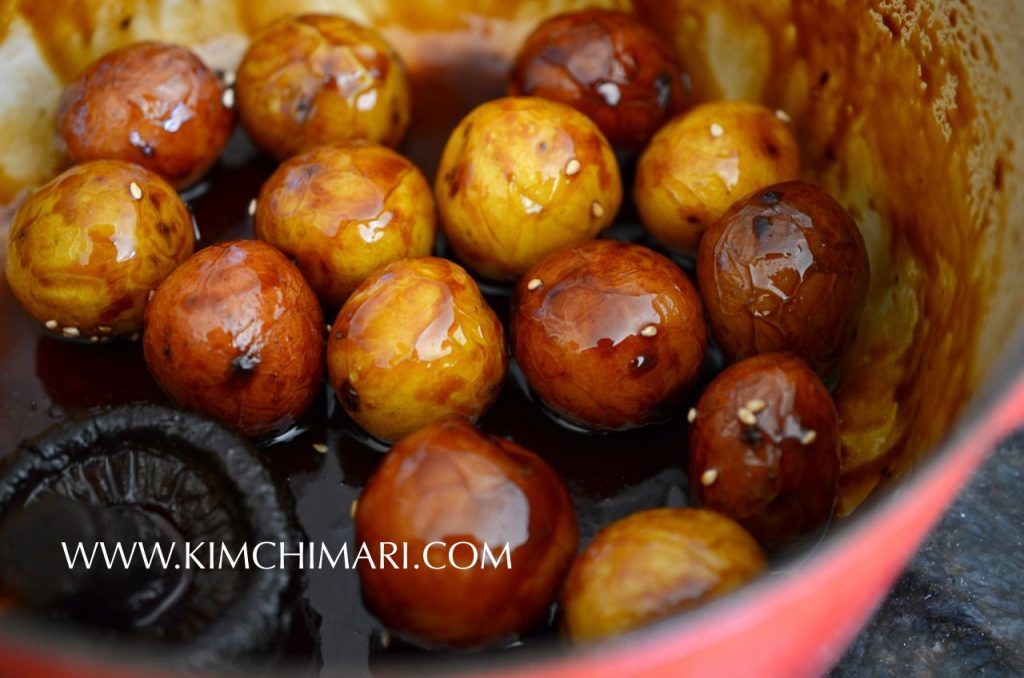
Korean potato side dish (Gamja Jorim) all cooked! - Finish with a swirl or two of sesame oil and sprinkling of sesame seeds. And now you are DONE!
Korean Potato Side Dish (Gamja Jorim 감자조림)
Ingredients
- 12 oz baby potatoes (substitute any waxy potatoes, cut into cubes)
- 1 each dried shitake mushroom (optional)
- 3 Tbsp soy sauce (jinkanjang) + 1 tsp soy sauce (optional)
- 2 Tbsp maple syrup
- 1 Tbsp sugar
- 1 1/2 Cup water (initial boiling)
- 2 Cups water (for sauce)
- 1 Tbsp vegetable oil
- swirl of sesame oil
- sprinkling of sesame seeds
Instructions
- Rinse potatoes. If using thick skinned potato, skin and cut into cubes.
- Cook potatoes in pot with enough water to fully cover potatoes.
- Once it boils, lower heat to medium and cook for about 10 min. Drain.
- Add potatoes back to pot, add 2 C water, 3 T soy sauce, sugar, vegetable oil and 1 shitake.
- Bring to boil and simmer, covered for 30 min or so until the liquid has reduced to 1/3.
- Uncover, add 2 T maple syrup. Further reduce until there is almost no liquid. Taste add more (up to 1 tsp) soy sauce to taste.
- Reduce from 6 few more minutes while you stir potatoes.
- Finish with a swirl or two of sesame oil and sprinkling of sesame seeds.
Tips & Notes:
Also, add 1 square of sea kelp (dashima) for extra flavor.
Store at cool room temp (up to 24 hrs) for best flavor. Store in fridge for up to a week.
Nutrition Information:
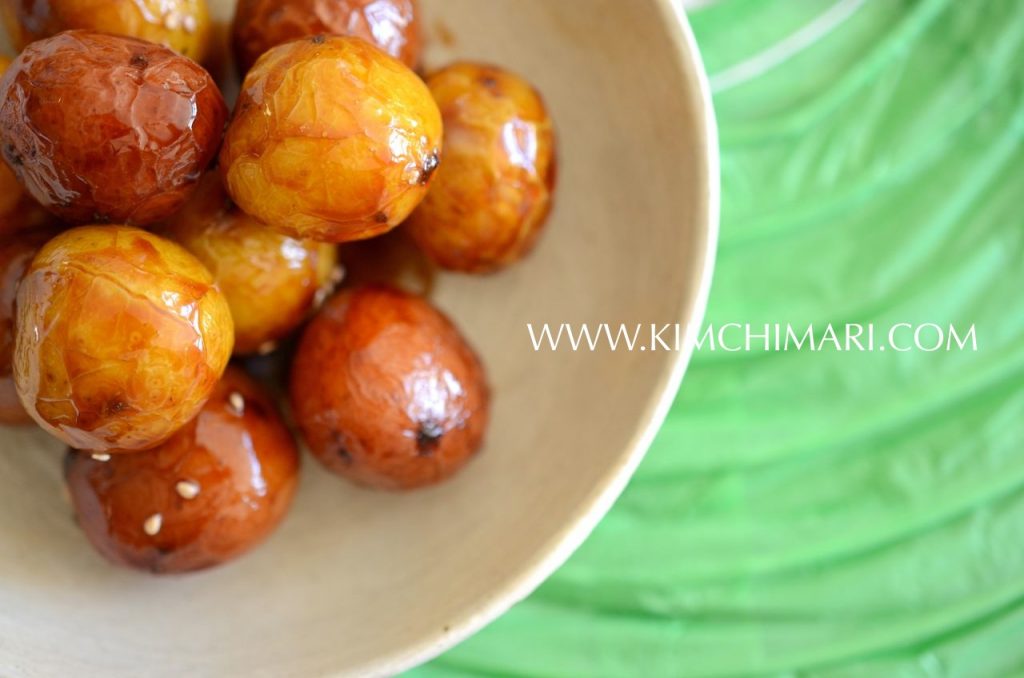
Bon Appetit!!
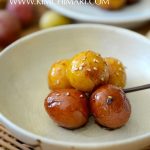
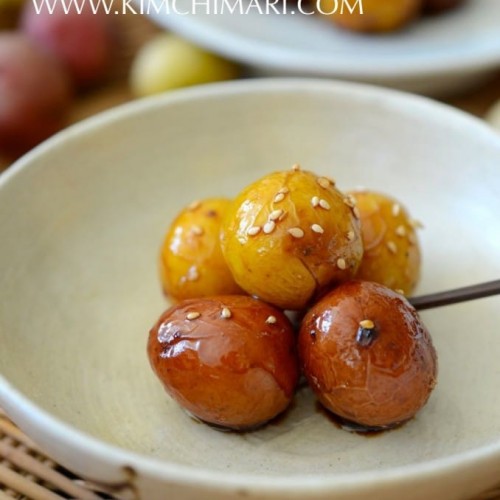
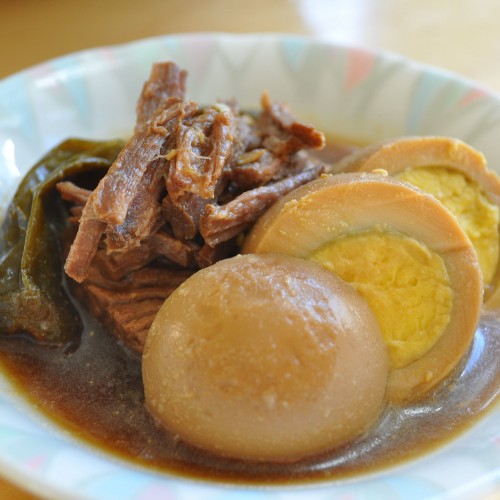
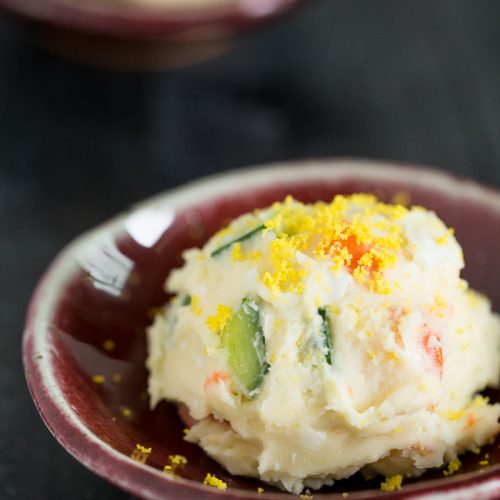
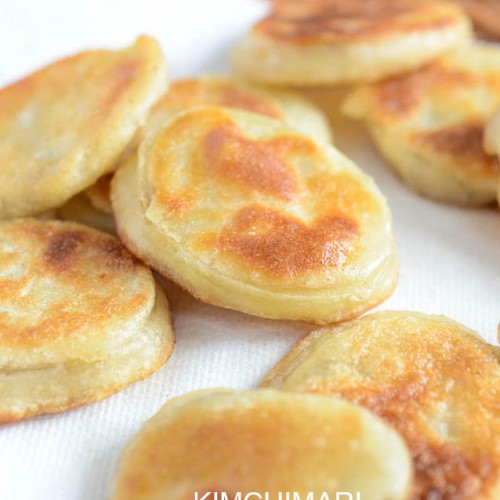
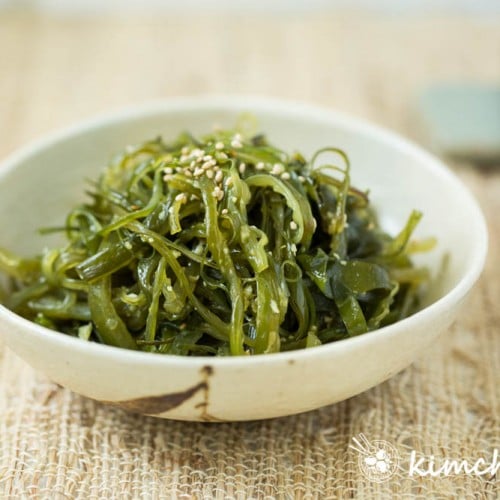
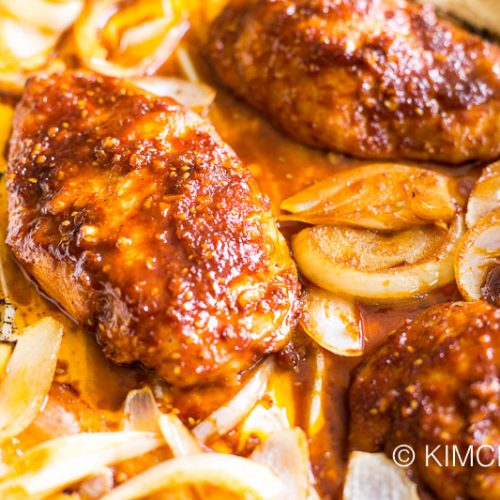
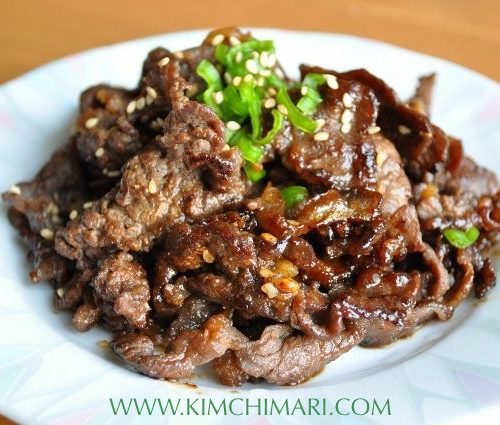
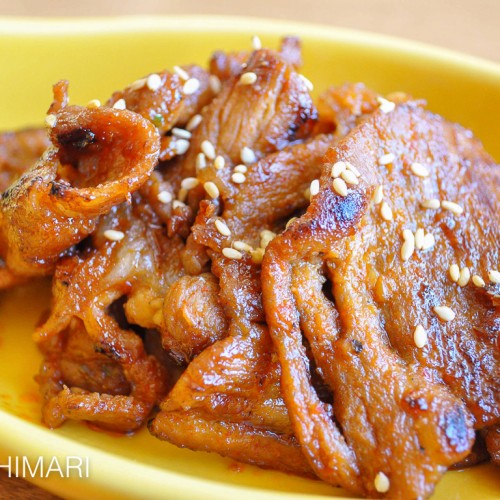

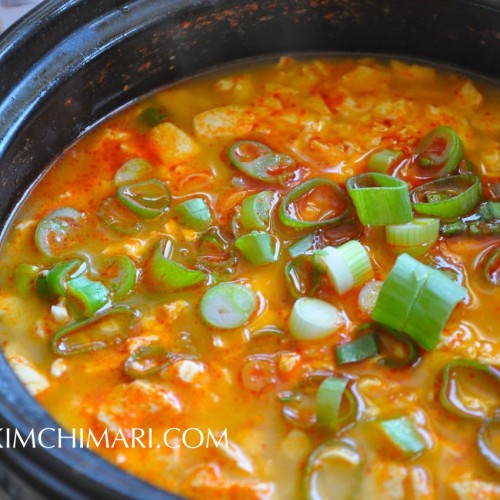
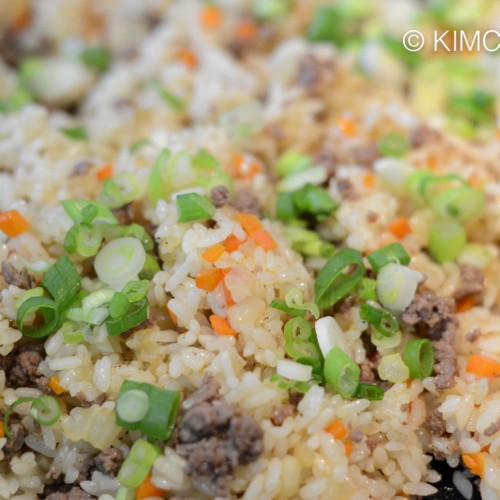
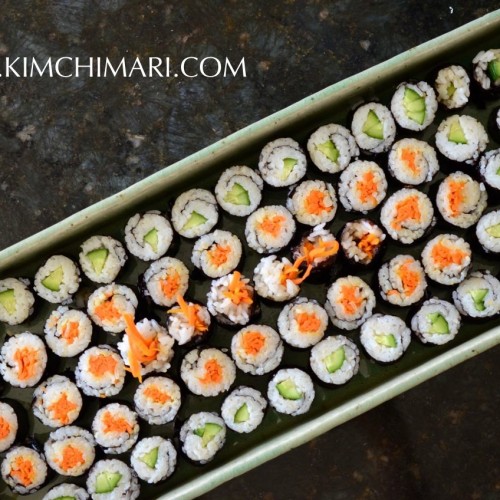
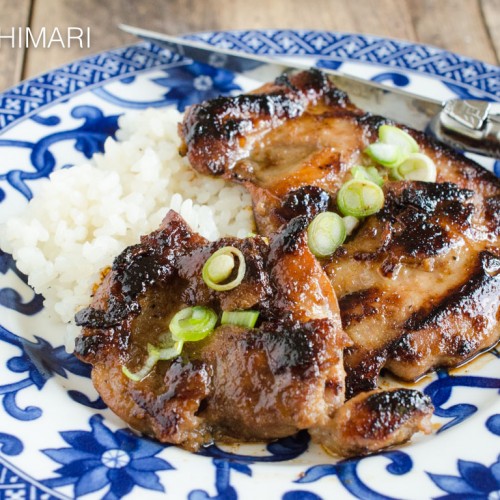
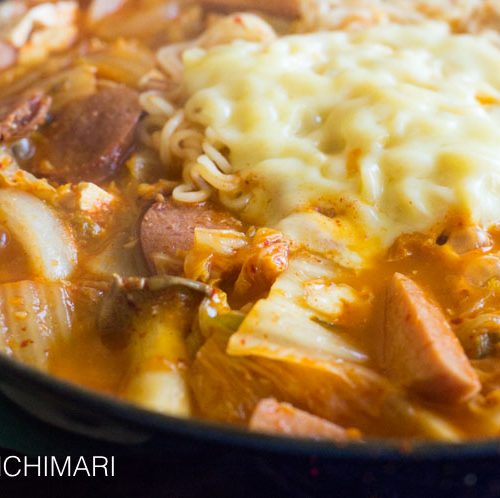
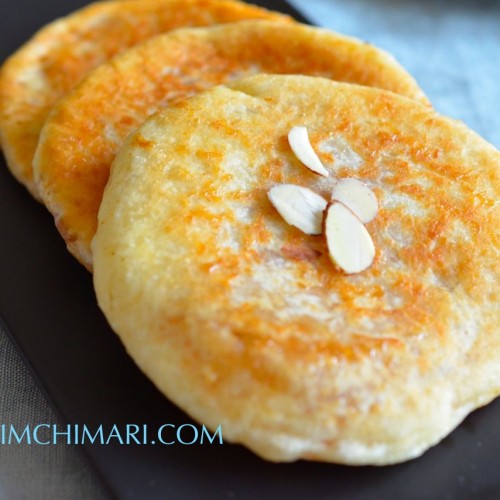






How can I heat these up if i’m making a bunch for a large crowd 2 hours before eating? Throw it back in a pan for a few minutes?
These are perfectly fine eaten at room temp. But if you want to heat it up maybe yeah in the pan or just keep it warm in the oven so it doesn’t dry out. Reheating in the pan may burn the sauce I am afraid..
Hi JinJoo, This is my first time visit your website, Would you clarify the measurements in your recipes please? ‘3 T soy sauce (jinkanjang) + 1 tsp soy sauce (optional)
2 tbsp maple syrup
1 T sugar”
There are “T”, tsp, and tbsp., of cause tsp and tbsp. are U.S. customary simplified units as teaspoon and tablespoon, what is “T” represent?
Thanks
Sorry for the confusion and inconsistencies. T represents Tbsp. Thank you for asking and I will update things soon.
Thank you JinJoo!!
Hi! I made these with “Blushing Belle” potatoes from the Little Potato Company. I ate one after I had boiled them for the first 10 minutes and it was yummy, like a normal potato. I just tasted one after simmering them for 30+ minutes and they now have a bitter, metallic flavour. I tried to find an answer online as to why this happened and they suggest it might be the solanine content in the potatoes but my potatoes weren’t green and tasted fine after being cooked for 10 minutes so I’m wondering if there is something about the technique that caused them to taste off. Have you ever had this happen?
Hi Jessica,
I never had that happen to me so it’s kind of odd that it tasted fine initially but tasted bitter afterwards. But based on my research, it seems that potatoes can have more solanine even without it turning green and I wonder since the potatoes were red, it may be harder to see the green? Also, it is said that solanine can actually disperse in water when boiled. So perhaps the reducing step had somehow concentrated it? That’s just my guess. But thanks so much for asking – it’s good to know that it can happen. I hope you will try my recipe again with another set of potatoes or maybe even peeled (since solanine is concentrated near the skin) if you want. When it’s peeled though, you can probably reduce the cooking time. Please let me know how it goes!
Hi there! Would it be ok to use Korean rice syrup instead of the maple syrup?
Yes it should be ok. Enjoy!
The 2 T maple syrup (step 6) is not in your ingredients list. Otherwise great recipe! 🙂 Thank you for sharing it.
Hi Melody, Oh my.. so sorry – I just fixed it. Thank YOU so much for letting me know. Glad you enjoyed it. Take care~